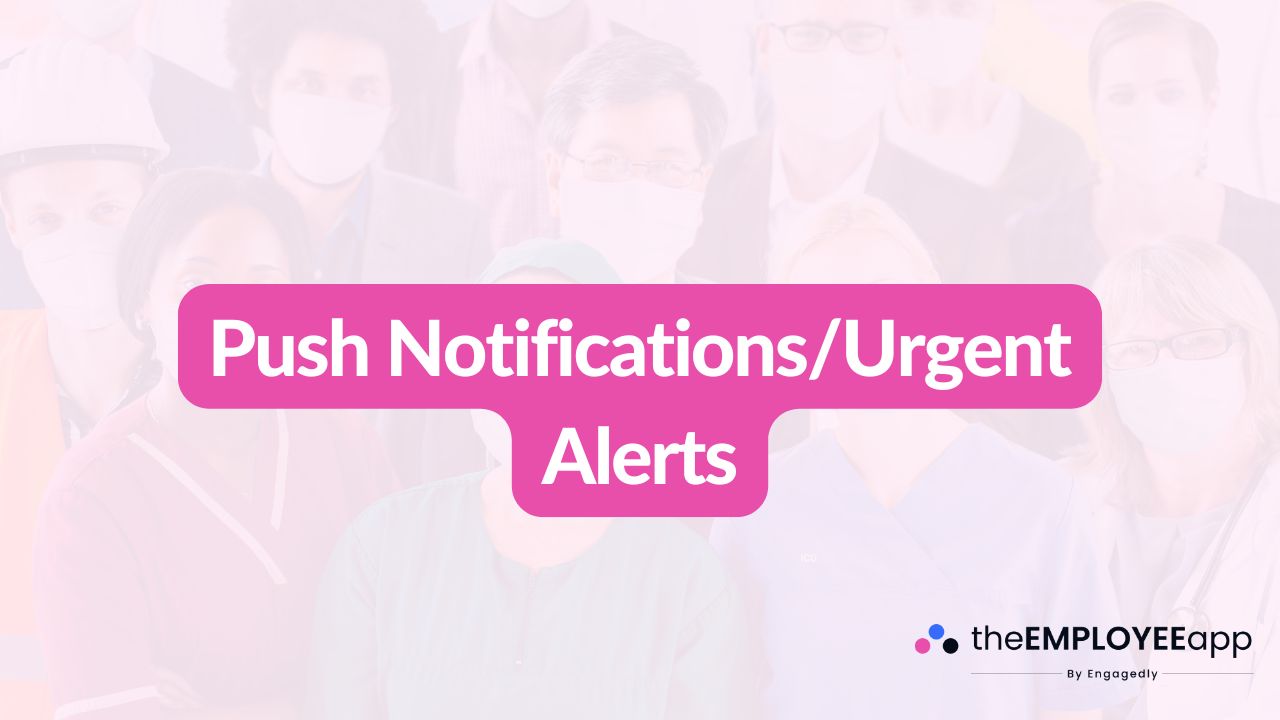
Push notifications and urgent alerts are real-time digital messages delivered directly to a user’s device—such as a smartphone, tablet, or computer—to provide immediate and critical information. In the workplace, these tools are used to communicate important updates, reminders, or emergency alerts to employees.
Push notifications typically serve as short, timely prompts that appear on a device’s lock screen or within an app. Urgent alerts, on the other hand, are used for high-priority messages that require instant attention, such as safety warnings, weather emergencies, or critical business updates.
Together, these tools ensure that employees receive important information quickly, no matter where they are located.
Modern workplaces are dynamic and often dispersed across multiple locations, with many employees working remotely or in frontline roles. Traditional communication methods, such as email, can easily get lost in crowded inboxes or ignored until later. Push notifications and urgent alerts solve this problem by:
Delivering information in real time
Reaching employees directly on their personal or work devices
Ensuring critical updates are not missed
Supporting fast response in emergency situations
For organizations focused on safety, productivity, and employee engagement, these tools are essential for cutting through the noise of everyday communication.
Implementing a push notification or urgent alert system provides organizations with several advantages:
Speed and Timeliness – Employees receive updates instantly, making it ideal for urgent communication.
Higher Visibility – Messages appear directly on devices, increasing the chances that employees see them.
Improved Safety – Urgent alerts are crucial in situations like workplace accidents, severe weather, or security incidents.
Better Engagement – Short, frequent push notifications can keep employees connected and informed about company news.
Reduced Dependence on Email – By bypassing email clutter, organizations can ensure vital information stands out.
Targeted Communication – Notifications can be segmented to specific teams, departments, or locations for relevance.
Organizations use these tools in a wide range of scenarios:
Safety Alerts: Informing employees about an evacuation, hazardous conditions, or equipment failures.
Operational Updates: Notifying frontline staff of shift changes, policy updates, or scheduling adjustments.
Crisis Communication: Sharing urgent company announcements during emergencies such as natural disasters or data breaches.
Reminders: Prompting employees to complete compliance training, attend meetings, or meet deadlines.
Employee Engagement: Highlighting company news, recognition programs, or new initiatives.
These examples show how versatile push notifications and urgent alerts can be in maintaining smooth communication across different workplace settings.
Despite their benefits, push notifications and urgent alerts can pose challenges if not managed carefully:
Overuse and Alert Fatigue: Sending too many messages can overwhelm employees and reduce effectiveness.
Poor Timing: Notifications sent at inconvenient times may be ignored.
Message Relevance: If alerts are not personalized or useful, employees may disable them.
Technology Dependence: Reliable access to devices and networks is essential for notifications to work properly.
To avoid these pitfalls, organizations must balance frequency, relevance, and urgency.
Organizations that want to maximize the effectiveness of these tools should follow key best practices:
Prioritize Urgency: Reserve urgent alerts for critical situations that truly require immediate attention.
Keep Messages Short: Notifications should be concise and easy to understand at a glance.
Use Clear Language: Avoid jargon and make sure employees know exactly what action, if any, is required.
Segment Audiences: Send alerts only to the employees who need them, ensuring relevance.
Test the System: Regularly test communication tools to ensure alerts are delivered quickly and reliably.
Combine With Other Channels: Use push notifications alongside email, meetings, or digital platforms for maximum reach.
Respect Boundaries: Be mindful of sending non-critical notifications outside of work hours.
Modern internal communication platforms and employee apps make it easy for organizations to create, schedule, and send push notifications and urgent alerts. These tools often provide analytics, allowing leaders to track delivery rates, open rates, and employee engagement. With this data, organizations can refine their communication strategies, ensuring messages are both effective and impactful.
Push notifications and urgent alerts are vital communication tools for today’s fast-paced workplace. They enable organizations to reach employees instantly with time-sensitive information, improving safety, engagement, and operational efficiency. When used strategically and sparingly, they help organizations cut through communication noise and ensure that employees never miss the messages that matter most.